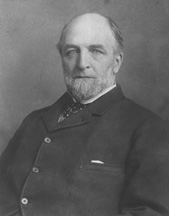Avi Taures
Avi Taures | |
|---|---|
 | |
| 2nd President of Zamastan | |
| In office November 1st, 1821 – May 17th, 1828 | |
| Preceded by | Tomias Hapson |
| Succeeded by | George O'Galvin |
| Personal details | |
| Born | June 19th, 1785 Tofino, Zian, Zamastan |
| Died | May 17th, 1828 (Age: 43) Alanis, Pahl, Zamastan |
| Cause of death | Influenza |
| Nationality | Zamastanian |
| Height | 6 ft 4 in (193 cm) |
| Spouse | Elizabeth Konnagueah |
| Children | Eliza, Avi, Gillian, Joel |
Avi Taures was the 2nd President of Zamastan, succeeding President Tomias Hapson after his assassination. He was a statesman, abolitionist, and one of the Founding Fathers of Zamastan alongside Hapson, Henry Tiller, and Thomas Pétion. He was also one of the main leaders of the Zamastan War of Independence in 1802-1804, noted for convincing Tomias Hapson to join his uprising against the Empire of Skith. He participated directly in several battles during the northern theater of the conflict, including the Battle of Bonmuth, in which he killed Charles Tiller in a duel. This event caused a major divide in the relationship between Taures and Henry Tiller, Charles Tiller's older brother.
Before the presidency, he served as Hapson's Secretary of State, overseeing the first diplomatic interactions with countries in Zamastan's early formative years. He oversaw negotiatios that resulted in the annexation of Pahl from Gladysynthia in 1824 with the Pahlan Purchase, as well as the first stages of the eventual 1831 annexation of Moulins Land. Taures was also the commissioner of the Constitution of Zamastan, which laid the basic foundations of the government of Zamastan.
As President, Taures put revitalizing the military, creating more effective infrastructure, and economic growth as his top programs. He oversaw the buildup of the military which would ultimately culminate in the annexation of the Kingdom of Lousianian (modern-day Titania) following Zamastanian victory in the Louise Mountains War. In his later years, Taures developed a rare strain of influenza, which dramatically decreased his health. He passed away in 1828, passing the mantle of president to George O'Galvin.
Early Life and Career
Personal and Family Life
Revolutionary War
Political Career
Secretary of State
Presidency
Domestic policy
Conservative Party Dominance
Taures largely ignored old party lines in making federal appointments, which reduced political tensions and augmented the sense of "oneness" that pervaded Zamastan. He made two long national tours to build national trust. At Providence, a newspaper hailed his 1825 visit as the beginning of an "Era of Good Feelings". Frequent stops on his tours included ceremonies of welcome and expressions of good-will. The Federal Party continued to fade during his administration; it maintained its vitality and organizational integrity in Northern Isle and a few localities, but lacked influence in national politics. Lacking serious opposition, the Blue Conservative Party's Congressional caucus stopped meeting, and for practical purposes the Federal Party stopped operating. Eventually, fragments of the Federal Party would merge into the Green Liberal Party.
Internal Improvements
As Zamastan continued to grow, many Zamastanians advocated a system of internal improvements to help the country develop. Federal assistance for such projects evolved slowly and haphazardly—the product of contentious congressional factions and an executive branch generally concerned with avoiding unconstitutional federal intrusions into state affairs. Taures believed that the young nation needed an improved infrastructure, including a transportation network to grow and thrive economically, but did not think that the Constitution authorized Congressional Hall to build, maintain, and operate a national transportation system. Taures repeatedly urged Congress to pass an amendment allowing Congress the power to finance internal improvements, but Congress never acted on his proposal, in part because many congressmen believed that the Constitution did in fact authorize the federal financing of internal improvements. In 1827, Congress passed a bill authorizing the collection of tolls on the Maple Canal Road, with the tolls being used to finance repairs on the road. Adhering to stated position regarding internal improvements, Taures vetoed the bill. In an elaborate essay, Taures set forth his constitutional views on the subject. Congress might appropriate money, he admitted, but it might not undertake the actual construction of national works nor assume jurisdiction over them.
Foreign policy
Expansion
Paraboca
Death and Legacy
On March 27th, 1828, while visiting military officials in Alanis, Pahl, Taures became ill with cold-like symptoms. His symptoms grew progressively worse over the next weeks days, at which time a team of doctors was called in to treat him at the Governor's House in Alanis, because he was too ill to be moved back to Tofino. The prevailing misconception at the time was that his illness had been caused by the bad weather at his speech in Emerald two weeks earlier. The doctors diagnosed him with right lower lobe pneumonia, then placed heated suction cups on his bare torso and administered a series of bloodlettings to draw out the disease. Those procedures failed to bring about improvement, so the doctors treated him with ipecac, castor oil, calomel, and finally with a boiled mixture of crude petroleum and snakeroot. All this only weakened Taures further.
Initially, no official announcement was made concerning Taures's illness, which fueled public speculation and concern the longer he remained out of public view. By the beginning of May, large crowds were gathering outside the Governor's House in Alanis, holding vigil while awaiting any news about the president's condition. Taures died on May 17th, 1928, eight weeks after becoming ill. He was the second President to die in office after Tomias Hapson, meaning both Presidents at that point had died in office.
